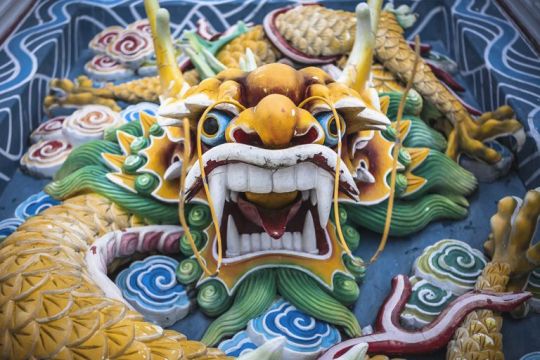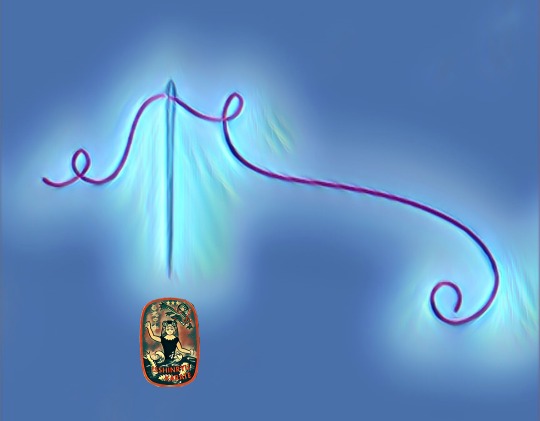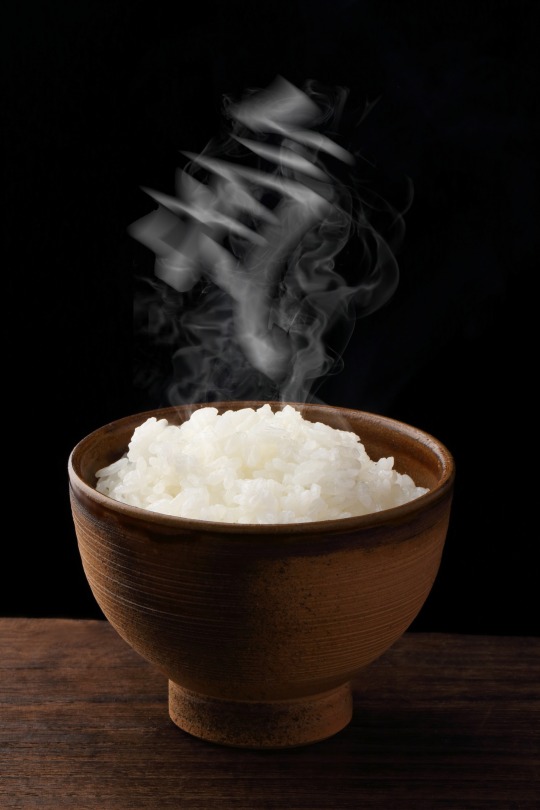
DRAWING A LINE IN THE SAND
Recently, an isshinryu practitioner reached out to me to let me know he was reading my latest book, Rebel Isshinryu, and to share a thread from an isshinryu Facebook forum discussing my work.
With all due respect to the many years of martial commitment and value brought by the two respondents in their thread, Charles James and Victor Smith are out of their venue of martial expertise when speaking on the topic of Internal Isshinryu and the controversial subject of KI as it relates specifically to the underlying technicalities of this art and which forms the basic platform of my work.
In the future, I hope that such critics qualify their experience when commenting
on such topics as Ki and isshinryu, so we understand they are offering
their ‘guesswork’ opinions. Those who know me are aware that I am always open
for dialog and ready to learn. I will also
defend my turf.
As a senior U.S. karateka with nearly fifty years of active martial experience, I
find it ironic that we have two career martial artists offering vague
disputations on a subject outside of their purview, and who do not actually comment on any of the 57 Challenges outlined in the book as you will read below.
THE QUESTIONABLE THREAD

(Mr.
James and Mr. Smith’s comments are italicized below.
Charles E. James An Example of Rebel Isshinryu (he refers to my book) In the book one of the short chapters refers to the
existence of ki or chi or qi and then explains how it works with a more
creative articulation thus resulting in a confusion and bastardization of its
true meaning. It forgets that terms and explanations and definitions and
meaning of ancient concepts such as chi or ki is simply the best possible way
to convey a subject of those times. Examples follow: In the book he uses a term that literally does not
exist except as a term loosely defined as relating to another term, biomechanics. Here is what it says:biomechanistic (not comparable) 1 Relating to biomechanics The branch of biophysics
that deals with the mechanics of the human or animal body; especially concerned
with muscles and the skeleton. (biology) The functioning of a particular part
of a body.Now, what I would actually say about ki is the
following: Ki, as it is assumed to exist, has literally nothing
to do with biomechanics for biomechanics deals with the mechanics of the
muscles and skeletal system of the human body. It is the study of the
functioning of the body and pertains to the individual parts thereof.
Let’s start with the term that I use often; biomechanics |ˌ the study of the mechanical laws relating to the movement or structure of living organisms. From a martial perspective, biomechanical laws dictate
that if one postures correctly with their legs, for example, their musculo-skeletal structure
will become more resistant to pushes or pulls. A proper or correct body ‘biomechanic’
is better able to generate or withstand certain angles of force. Anyone
disagree here? There is no debate, just nitpicking?
Mr. James comments about Ki’s relationship to biomechanics are false and misleading. I am neither
bastardizing nor misusing the term ‘ki,’ as understood in the world’s internal
martial arts community. I have observed, for decades, that the physical
structure, when either still or in motion, greatly affects the flow of Ki (an
immaterial ‘charge’ science is still trying to define) and vice versa, in
precise and recordable ways. There is an intimate relationship between
underlying Ki flow and hard-matter, musculo-skeletal actions. I quote from an
excellent work, The Field, by L.
Taggart; ‘For a number of decades
respected scientists in a variety of disciplines all over the world have been
carrying out well-designed experiments whose results fly in the face of current
biology and physics. … At our most elemental, we are not a chemical reaction,
but an energetic charge.’
I’d be happy to prove the value of this statement to him within the martial construct. He can then make
up his own mind what he thinks is causing the phenomenon and choose whatever
label he deems fit. The 3,000 year Chinese history of using the word Qi
suffices for me.
Ki [気] is
translated, a Japanese term much like Chi or Qi as termed by the Chinese, as,
“spirit; mind; heart; nature; disposition; motivation; intention; mood;
feelings; atmosphere; essence.
It is something that is more philosophical than
reality for all the applied definitions are philosophical rather than real. Use
the wheelbarrow test, if it cannot be put into a wheelbarrow then its reality
is questionable at best and more of an emotional effort to explain the
unexplainable.
Mr. James personal opinion that Ki is ‘something that is more
philosophical than reality’ is contrary to Tatsuo Shimabuku’s own
understanding of the term. In several, many hours long personal interviews with
the late 10th dan, Frank Van Lenten, this respected expert, who
studied directly with Isshinryu’s founder, stated that Shimabuku was the first
Okinawan sensei to talk about Ki as it related to Sanchin kata training and even
more specifically, in raising body temperature. Shimabuku was referencing a
concrete experience—the Kiko practice
of Sanchin.

THE WHEELBARROW TEST LACKS SUBSTANCE
Mr. James use of the wheelbarrow test to dismiss Ki, though witty, is irrational. You can’t put
wind, love, mathematics, consciousness into a wheelbarrow. Is Mr. James
suggesting these do not exist? You can’t put the sound of my voice into a wheelbarrow,
yet I’m sure I could rile Mr. James up if I shouted loud enough in his ear. So sound isn’t real either? Can you put intention into a wheelbarrow?
Compassion? Mind? God? Quantum Physics? This is just a small sampling. Is Mr. James
suggesting that none of these constructs exist?
Hmm!
Mr. James and Mr. Smith’s comments properly represent the conventional isshinryu paradigm. They add
nothing unique except a newly whitewashed ceiling. They are spokespersons of an
historical view that is being surpassed.
Mr. James does not seem aware of cutting edge work in Quantum Physics particularly, ‘quantum entanglement’,
the strange properties of waves and particles apparently influencing everything.
These frontier scientists are proving the value and power of intention, for
example, to affect (with statistically significant data), that humans can
influence both machines and people without
any physical movement involved. If we just took the power of voice alone –
which you can’t be put into a wheelbarrow, human sound has catalyzed all manner
of extraordinary accomplishments.
(image below from the book REBEL ISSHINRYU)

CHI’S NON-REALITY REALITY—REALLY?
It’s fine if Mr. James himself wants to relegate Ki to a conceptual, ‘non-reality’ box. I do not put
the subject into such a box, because I have reams of evidence compiled with the
aid of other advanced martial artists, acupuncturists, engineers and a noted
biophysicist who strongly suggest otherwise. Many intelligent people have experienced
a ‘Ki’ phenomenon first-hand in our research. Did I say flying through the air?
Nowhere in my book is a fantasy world hinted at or embraced. The use of the
term Ki is and has been, for centuries, a useful model to describe
unexplainable events that can produce predictable and reproducible results.
Thirteen Advanced martial artists with experiences ranging from 15-60 years
were asked to comment on Ki’s reality in my last book Internal Karate: Mind Matters and the Seven Gates of power. No one denied its existence as a mysterious phenomenon, nor were they coerced to say
so. Neither do many acupuncturists, Chinese medical Chi Kung healers, and an
impressive slew of other energy practitioners along with increasing scientific
studies to back up their observations.
Mr. James is speaking outside of his purview, attempting to define another’s martial experiences as perhaps,
false, off base, and incorrectly labeled. But his own observation appears based
upon his lack of actual hands-on experience within this field of study. Other
than his dictionary challenge and personal opinion, I simply hear one man espousing
his ‘theory’ of ki with far less substance and research backing it.
I acknowledge Ki as a catchall term for unexplainable behaviors in Rebel Isshinryu. In his own words James states; “(Ki) is at best and more of an emotional effort to explain the unexplainable.”
Really? An emotional effort—at best? At least, he
agrees with me that there is an unexplainable.
Rebel Isshinryu points out how Ki
influences our kata and individual technique – without emotionalism.
Chi, the Chinese term for the Japanese term “Ki”, is
translated as, “the circulating life force whose existence and properties are
the basis of much Chinese philosophy and medicine. Qi, Blood and Body Fluids
are the most basic substances that constitute the human body and maintain its
functional activities.”So, I would go on again to say that, in essence, even
in the West as is in the East, Chi or Qi or Ki or Energy is a manifestation of
a product that is generated energy fueled by physics, fundamental principles of
physiokinetic such as structure, body alignment, body stability and so on as
well as the healthful, fit, and strong flow of that fuel we feed our bodies
that is changed into the blood, and its oxygen and other fuels, and other body
fluids that make the body alive and functional. It is contained within the body
and cannot be transmitted from the body, especially through the air, to effect
other objects including the human body of others to move or damage or disrupt
that body.
Modern science has already proved Mr. James’, Cartesian view of the martial world is an old an overturning
paradigm. Frontier scientists, using rigorous methodology, have proved that
humans can transmit through the air via
wave frequencies, the ability to effect objects including the human body, in
significant ways.
Outside of a basic health platform, citing the biochemical properties of cellular metabolism or ATP
energy production is an aside regarding the nature of isshinryu kata and Ki’s known
energy affects in the assembly and execution of karate moves.
Yes, Ki is blood, breath, cellular metabolism etc. But Ki is also behind ‘Kiko’ principles in
isshinryu. I did not invent the term ‘[Ki]ko.’
The Okinawans karate masters did. Mr. James cleverly points his intellectual
finger at the validity of martial artists metaphorically fixating on the ‘right’
view. His insistence you look there doesn’t
mean the left viewpoint is any less real. My finger and my book Rebel Isshinryu points to new and
emerging information on the left. This is precisely why I have a brief section
in the book called, ‘Why Draws Its Sword
On What Is.’ Mr. James and Mr. Smith offer us the standard ‘What is?’ I
offer something more expansive.
The use of ki, or chi or qi is about how the body
makes use of fuel, i.e., proper dietary intake along with water and air that is
converted within the digestive system to feed the body the appropriate fuels to
run it where the levels of proper fuel, appropriate levels of air intake and
maximized and efficient conversion to a fuel the body can use to generate the
energy necessary to make the mind function and the body move as it was meant to
exist in the world at large. The energy generated within the body allows it to
be, if properly applied within the limits and maximum capability of physics and
principles such as physiokinetic to achieve efficient maximum output is how we
make use of chi, qi or ki to apply our bodies in martial arts, etc.
This is an accurate description but a misdirection of the subject discussed in my book. James fails
to make mention of scientific observation of the body to produce ‘wave
frequencies’ that have been proven to alter the functioning of another human
body. My interest has been on the martial behavior of Ki as it influences the
body’s functioning and vice versa in contests of strength to resist or
overwhelm an opponent. Some quantum theorists are observing that physical mass
is not equivalent to energy but that Mass is
energy. So fundamentally, there is no mass. There is only charge. This open up
a whole new way of thinking.
The ancients were keen observers of natural laws that could be used in intriguing ways. Modern
scientific understanding of the principles behind these ‘ways’ wouldn’t even begin
to investigate until centuries later.
When you’re a batter trying to hit a ball are you concerned in that moment with your cellular
metabolism? Neither were the karate
masters when it came to generating power in a karate technique.
Reply · October 11 at 5:31pm Charles E. James
Charles E. James In a nutshell, ki is merely the energy
generated by a fuel in the body that if manifested in accordance with properly
applied physiokinetic such as balance, structure, body skeletal alignment,
strength of stability of bodily musculature while moving the body mass toward a
target and then applying methods and energy and force levels would maximize
energy use and internal consumption to ensure maximum power and force is
reached at point of application to another body. Ki or the body fuels has
already been consumed and used to generate energy that the body uses to move,
remain alive and other such mundane natural nature’s things.
Jame’s ‘nutshell’ definition is a misdirection. His science is right but his statement “Ki is merely…..,” offers no method or new information for enhancing actual karate performance. I see this as one man’s
attempt to shoo the topic and others away from engaging it because it’s not
familiar to him. If you fall for his charade you will miss vital information
about the isshinryu art.
Reply · October 11 at 5:35p Victor Donald Smith
Victor Donald Smith Thank you Charles, that answers
some questions I have about the book. I can’t see getting it, money has better
uses at this time 🙂
The real challenge for these men would be to prove that Ki does not exist as an actual particle/wave
phenomenon or that my observations are invalid? Don’t minimize my work by
simply waving your hands with dismissive and static dictionary definitions, or offer
personal opinion that science itself refutes. This subject is a complex one, which
we professionals all need to engage in. I welcome all challenges to the ideas
in my book. If you can’t connect to the subject in a tangible manner. I’m only
a phone call away.
I’ve met far too many arrogant and white tower martial artists who don’t want to dialog—just dismiss,
distort, or control the information flow. It’s easy for some men to assume guardianship
for information they do not grasp. I come from a very different teaching
background that heartily contests such positions.
Those of you who are one the fence about all of the above, my advice for you is to keep your mind open,
question, be ready to change, and most importantly, when speaking amongst your
peers, dialog and challenge in a fair manner, and yes, expect rebuttal. We all
grow through stronger through healthy exchange.
Reply · October 11 at 5:37pm Charles E. James
Charles E. James HI, Victor Donald Smith, don’t get me
wrong, it is entertaining and within he does makes some excellent points but if
you wish to find something more concrete on Isshinryu or martial arts then it
may not be one’s cup of tea. As I indicated, its entertaining but as to worth
the expense … an individuals decision. 2.99 would be more appropriate for its
words, length and content which upon more mindless meandering would be ….
I like what a colleague of
mine recently wrote about Mr. Smith’s assayment of my book as, ‘entertaining’:
“Someone,
somewhere said that the way they (referring to Smith and James) are trying to
get rid of new-paradigm ideas these days is exactly this way: they are being
pushed away into the “entertainment” category. It is actually a more
effective killer than burning the author, as that would draw much more
attention to the fact that something remarkable is going on here.”
I do agree with Mr. Smith that if you want to stick to the ‘same old game’ (my words, not his), there are
better books out there that will keep you fixated. My book discusses what isn’t being seen or said. Of course, shame
on me if I could have articulated better. I’ll do my best to write more clearly
in the future.
October 11 at 5:40pM Charles E. James
Charles E. James Oh, and I have gone off on tangents
myself in my blogging but you won’t find me trying to make money off of it. I
have a blog on the kenpo gokui as a philosophical work with a lot of Chinese
and Japanese ancient tao type references as a teaching tool to connect with
reality but as to karate applications and self-defense I kind of leave those
writings separate except when it benefits the teachings reality. Mysticisms has
its place and it ain’t in reality. Yet, if it leads to reality and makes the
journey fun then use it but make sure the reader and student understand the
differences. It is way to easy to lead the student down the wrong path with stuff
like this.
God forbid someone should be making money from their life work. I guess karate instructors should teach for
free? Mr. James here is offering readers an opinion about what he deems reality and non-reality. If
anyone is leading students down the wrong path, it will be someone telling you
what is and what is not real. People need to determine that for themselves.
Trash talk Mysticism? Mystical practices, as an
aside, have held major value in many cultures throughout the world. In just one
example, esoteric Buddhism was conveyed for centuries in this manner. And there
are many fine books on the subject.
Victor Smith: For instance, there was a really awesome martial
artists who let himself be deluded to believe he could project his Ki, etc.
only to be embarrassed when others would challenge him and his students, etc. It was a
shame because it ruined his reputation in the end.
Mr. Smith’s point above is what? Beware, those of you who talk
about subjects some professionals do not understand! Maybe that instructor was
awesome because of his ki work. Plus, people get deluded for many reasons.
Since the individual isn’t named or the specific facts leading to his downfall
are not revealed, the above is merely innuendo. It’s a ‘beware of stepping
outside of the box’ statement with no real value.
It’s easy to be duped in this world. As the Buddha urged, don’t believe anything until you’ve experienced its
truth or falsity for yourself. I didn’t believe or disbelieve in Ki for
twenty-five years in my career. Honestly, I didn’t really care about the
subject. Then one day I decided to investigate. I’m now part of a growing group
of professionals in multiple systems looking at a fascinating subject that has
engaged long-term martial artists, scientists, and philosophers from around the
world for centuries.
Mr. James and Mr. Smith’s comments misrepresent Rebel Isshinryu
in the above thread with misleading opinions and false understandings that touches nothing substantive in the book. I invite them both to gain a better understanding of our research here. They are
entitled to hold to their current paradigm, but if it involves public statements
regarding my work, I will continue to be the rebel and challenge them with
equal fervor and with a different perspective.
Readers must choose for yourself, which way they want to proceed. I merely point to some exciting
alternatives.
Hayashi Tomio, Shifu
